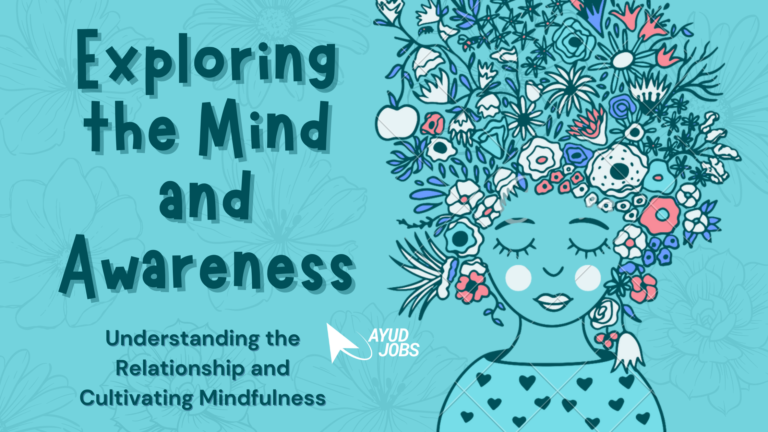Self-Projection Understanding and Mastering the Art of Presenting Yourself
Self-projection is a powerful concept that influences how others perceive us and how we perceive ourselves. Whether you’re in a job interview, social setting, or even among friends, the way you project yourself can have a significant impact on your relationships, career, and overall life.
This blog will guide you through the basics of self-projection, offering practical tips and real-world examples to help you master the skill of projecting your best self. By the end, you’ll understand how self-projection can shape your personal and professional life in meaningful ways.
What Is Self-Projection?
Self-projection refers to how we communicate our personality, values, and intentions to others. It’s not just about how you look or what you say, but also about your body language, tone, and attitude. When done effectively, self-projection helps people form positive impressions of you, which can lead to better relationships and opportunities.
In today’s competitive world, self-projection has become an essential skill, whether you’re in a technical field, non-technical role, or still a student preparing for your career.
Why Is Self-Projection Important?
Good self-projection helps you:
Build stronger personal and professional relationships.
Create a positive and lasting impression on others.
Gain confidence and clarity in your communication.
Succeed in interviews, meetings, and presentations.
Enhance your social influence and leadership qualities.
These benefits are achievable regardless of whether you are in a technical role like software engineering or a non-technical role like marketing.
Components of Effective Self-Projection
To project yourself effectively, you need to focus on a few key components:
Body Language
Your body language often says more than your words. Good posture, eye contact, and open gestures can make you appear confident, approachable, and trustworthy.
Tone of Voice
A calm, clear, and positive tone of voice is crucial for effective communication. If you speak too fast or too softly, you might appear nervous or unsure. Practicing your tone can help you come across as confident and well-spoken.
Dress and Appearance
First impressions matter, and your appearance is a big part of that. Dressing appropriately for the situation and maintaining a neat, professional appearance helps you project competence and respect for the setting.
Verbal Communication
What you say and how you say it matters. Clear, concise communication, with well-thought-out points, helps you convey your ideas more effectively. Avoid using jargon or overly complex words unless necessary, as this can alienate your audience.
Attitude and Mindset
A positive attitude goes a long way. Your mindset influences how you perceive challenges and how others perceive you. Maintaining a growth mindset—believing in your ability to improve—will help you project resilience and determination.
The Role of Self-Projection in Different Areas of Life
1. Self-Projection in Personal Relationships
In personal relationships, self-projection plays a vital role in how you connect with others. People often form impressions within seconds, so your body language, tone, and even your first words can shape how others see you. If you project kindness, confidence, and openness, you’re more likely to attract similar energy from others.
Example:
Imagine you’re meeting someone for the first time. If you greet them with a warm smile, steady eye contact, and positive energy, they will likely feel comfortable and open toward you. On the other hand, if you appear closed off or distracted, they may assume you’re uninterested or unfriendly.
2. Self-Projection in the Workplace
Self-projection is critical in the workplace, where how you present yourself can influence promotions, opportunities, and relationships with colleagues. Projecting a professional, reliable image is essential to gain trust and respect.
Example:
In meetings or presentations, projecting confidence in your ideas—even if you’re nervous—can make a significant difference. By speaking clearly, maintaining eye contact with your audience, and standing with confidence, you can ensure your message is well-received.
3. Self-Projection for Students
For students, self-projection can shape how teachers, peers, and potential employers perceive you. Participating in class, asking thoughtful questions, and engaging positively with others can help you project a focused, diligent image.
Example:
Consider a student who actively participates in group discussions. They show that they’re interested and committed to learning, which positively impacts how teachers and fellow students view them. This also sets a strong foundation for future networking and career opportunities.
How to Improve Your Self-Projection
Improving your self-projection is an ongoing process that requires self-awareness and practice. Here are some actionable tips:
Practice Good Posture and Body Language
Whether you’re sitting in a meeting or standing in a social setting, good posture projects confidence and attentiveness. Stand tall, with your shoulders back, and avoid slouching. Practice open gestures like nodding and keeping your arms uncrossed to appear more approachable.
Work on Your Communication Skills
Practicing clear and concise communication is vital. If you’re in a technical field, ensure that you can explain your work in simple terms for non-technical audiences. This will help bridge communication gaps and make you more relatable to others.
Maintain Eye Contact
Eye contact signals that you’re engaged and trustworthy. When speaking to others, make sure to hold their gaze for a few seconds at a time. Avoid looking at your phone or getting distracted, as this can create a negative impression.
Smile and Stay Positive
A smile can make a world of difference in how others perceive you. A positive demeanor shows that you’re approachable and open to others’ ideas. It also helps you build rapport with people quickly.
Dress for Success
Dressing appropriately for the occasion not only shows respect for the setting but also boosts your confidence. Choose attire that fits the situation—whether it’s formal for an interview or casual for a social gathering.
A Real-Time Example: Sarah’s Story of Self-Projection
Sarah, a fresh graduate, was nervous about her first job interview. She had the qualifications but struggled with projecting confidence. Before the interview, Sarah practiced her body language, worked on her tone of voice, and rehearsed her answers to common interview questions.
On the day of the interview, Sarah entered the room with a straight posture, offered a firm handshake, and greeted the interviewers with a warm smile. Throughout the interview, she maintained eye contact, spoke clearly, and confidently explained her skills. Even though she was nervous, her self-projection made her appear calm and capable.
As a result, Sarah not only impressed her interviewers but also received a job offer. Her self-projection played a crucial role in making a positive impression, showing that even small adjustments can lead to big results.
Self-Projection vs. Self-Promotion: What’s the Difference?
It’s important to distinguish between self-projection and self-promotion. Self-projection is about presenting your authentic self in the best possible light, while self-promotion often focuses on highlighting your achievements to others. While self-promotion can be useful, overdoing it can come across as bragging. Self-projection, on the other hand, is about building genuine connections and being mindful of how others perceive you.
How to Implement Self-Projection in Your Daily Life
The key to mastering self-projection is consistency. Here are some ways to implement it in your everyday life:
At Work: Start your day by projecting confidence and readiness. Greet colleagues with a smile, participate in meetings, and offer thoughtful contributions.
At Home: Practice active listening with family and friends. Engage in conversations with empathy and openness to strengthen your relationships.
In Social Settings: Attend networking events or social gatherings with a positive, open attitude. Engage with people through good posture, eye contact, and genuine interest in what they have to say.
Conclusion: Making Self-Projection a Life Skill
Self-projection is a skill that, when mastered, can open many doors in both your personal and professional life. By focusing on your body language, communication skills, appearance, and mindset, you can create a positive image that attracts opportunities and strengthens relationships.
Remember, self-projection is not about pretending to be someone you’re not. It’s about amplifying the best parts of yourself and presenting them in a way that connects with others. With time, practice, and self-awareness, you’ll find that self-projection is not just a tool for success, but a pathway to personal growth and fulfillment.
#SelfProjection #BodyLanguage #EffectiveCommunication #PersonalBranding #ConfidenceBuilding #ProfessionalGrowth #PositiveImpression #LeadershipSkills #CareerSuccess #MasterYourMindset #ayud #ayudjobs #askayud #MultiLanguageSupport #ResumeBuilder #gotestit #ayudian #ayudblog #ayudcareer
How to Use Ayud : A Comprehensive Guide
Join our what’s app channel for timely updates







